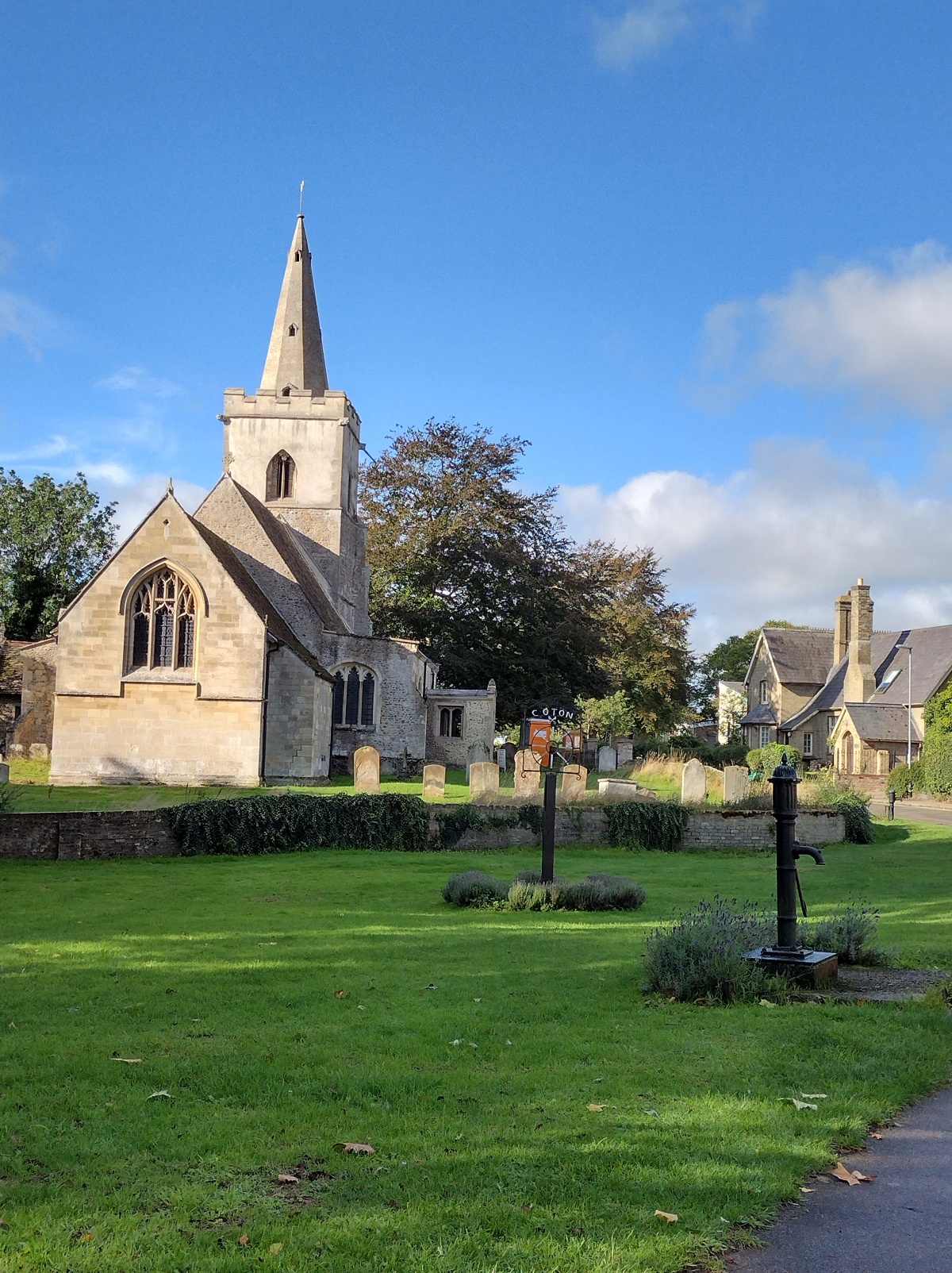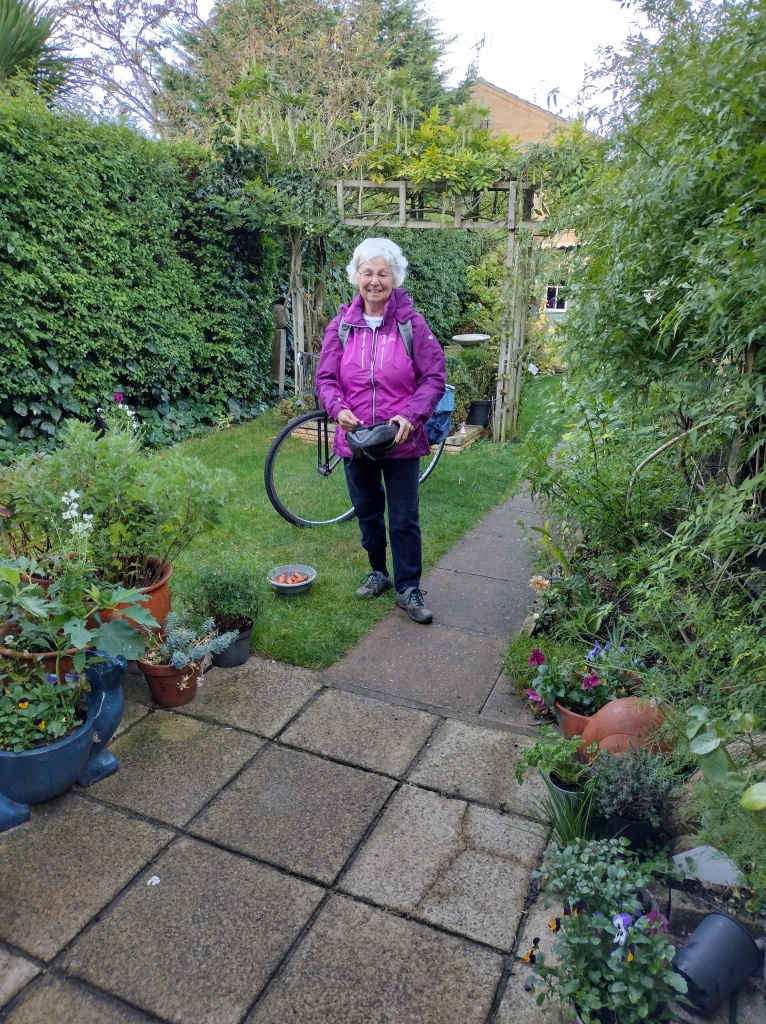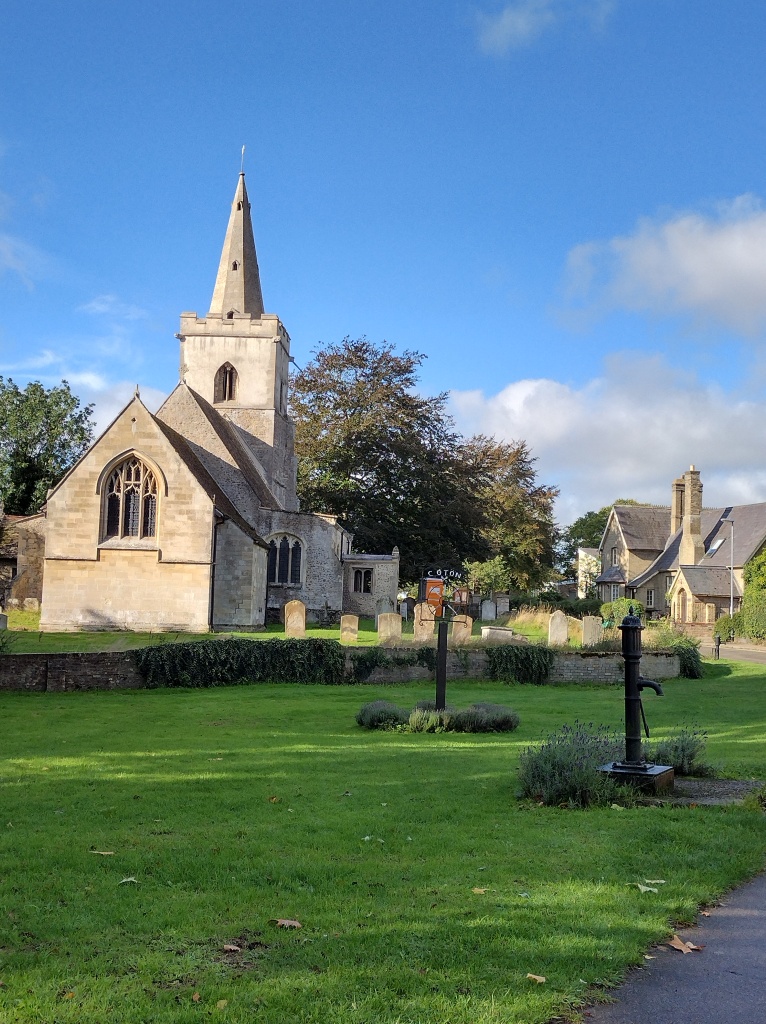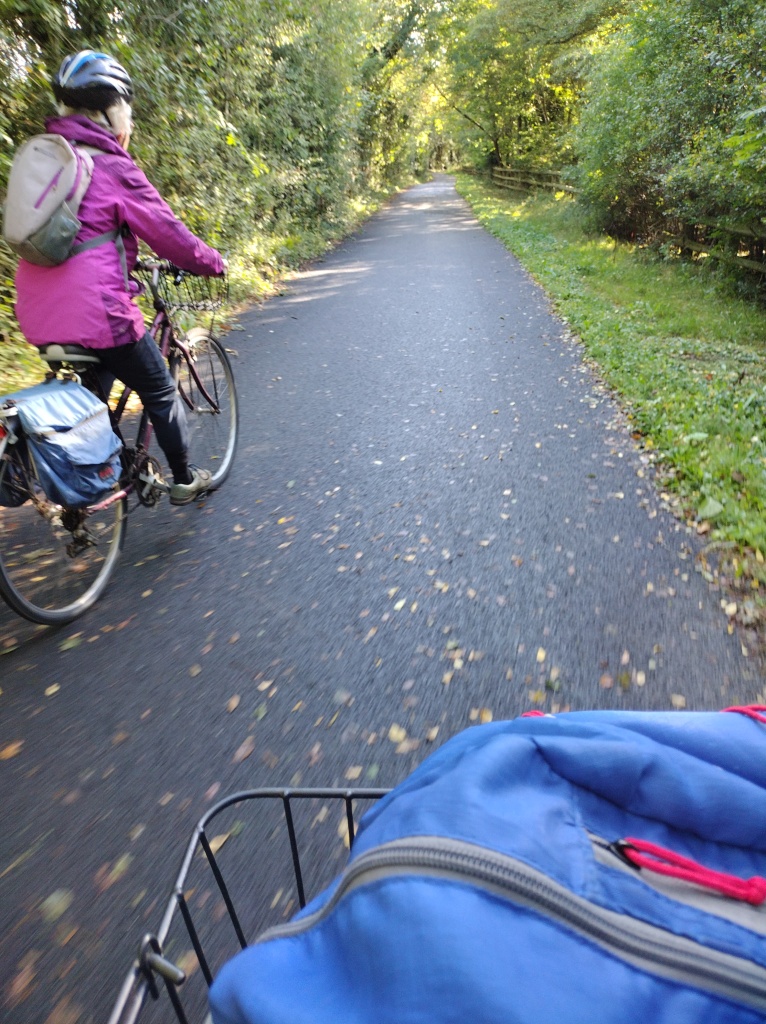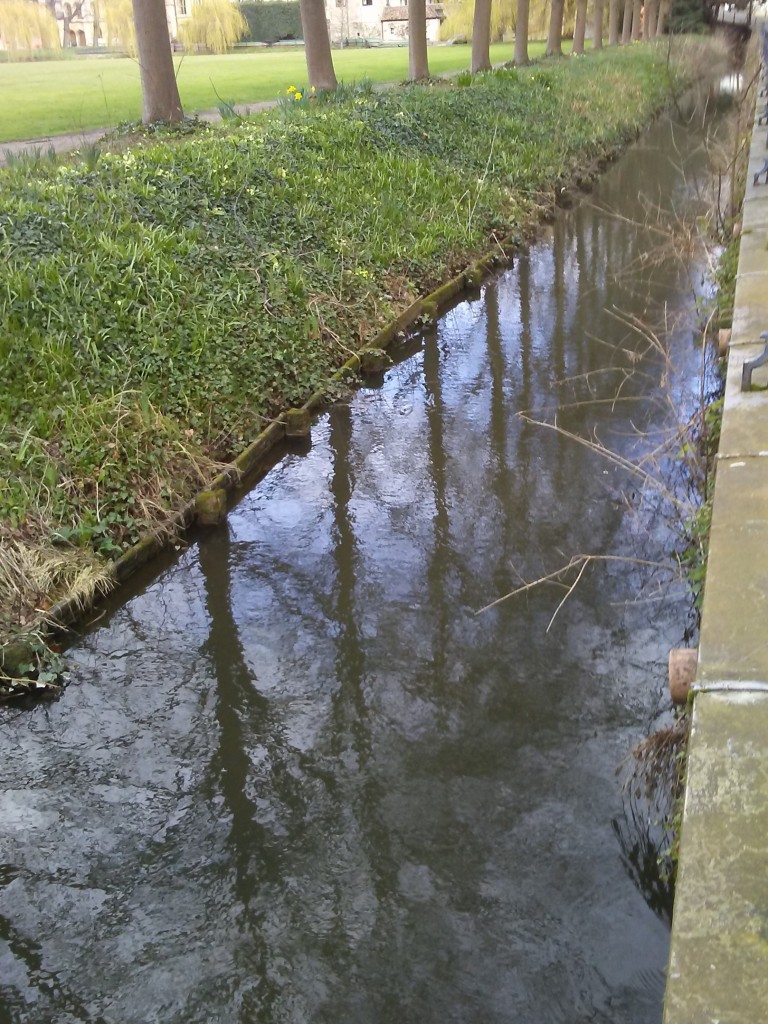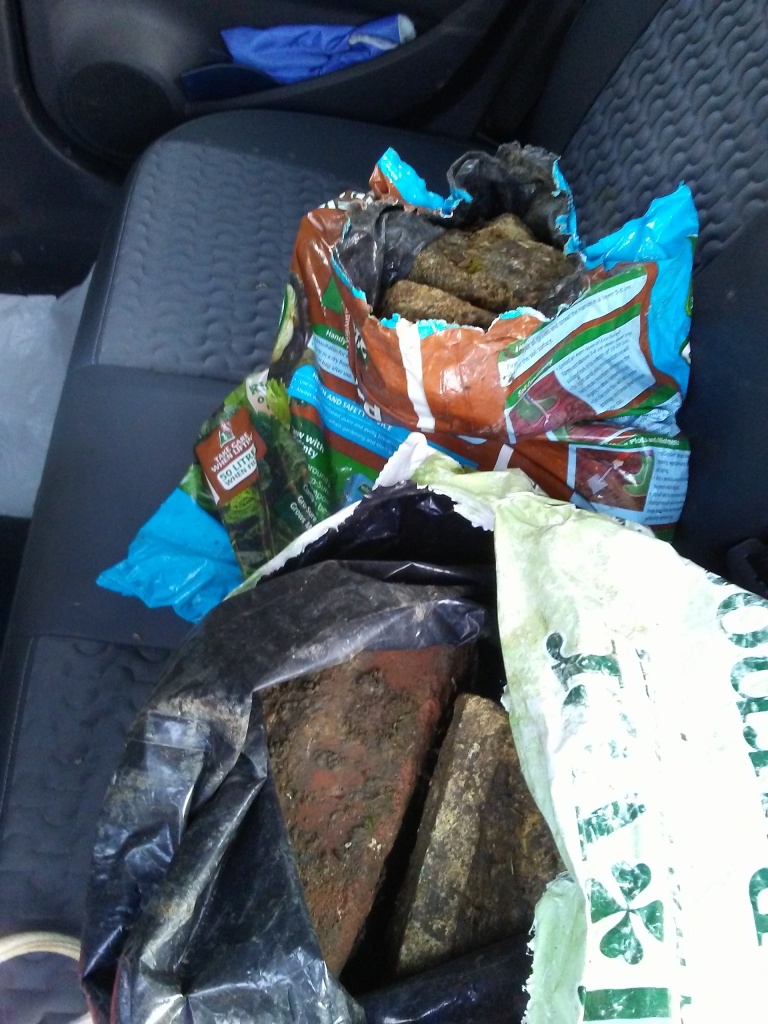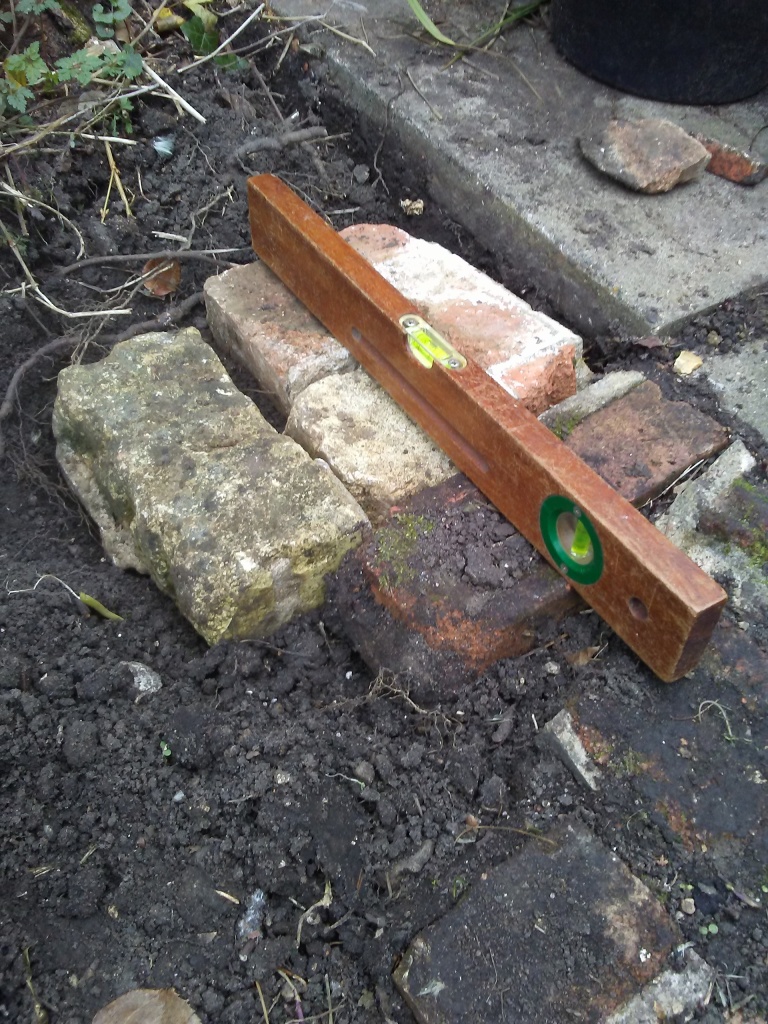The Queen has been on the throne for 70 years, the longest reigning European monarch, and a unique situation, unlikely to be repeated. She became Queen in February 1952 when her father died (and she was on an African safari). Her coronation was on June 2nd 1953. She celebrates her ‘official’ birthday on June 2nd although her birthday is April 21st and she was 96 this year, 2022.
This year bank holidays were rearranged (late May bank holiday moved to Thursday 2nd and an extra day added on Friday 3rd) to give a 4 day weekend from 2nd to the 5th of June. Over these days there were large national events organised in London that were televised. Also many communities had street parties and other gatherings. Many of our neighbours were away seeing friends and family or taking advantage of the long weekend to go on holiday so there was nothing laid on here, although our bunting gave a celebratory feel to things.
The bunting goes up at the back of the house………….
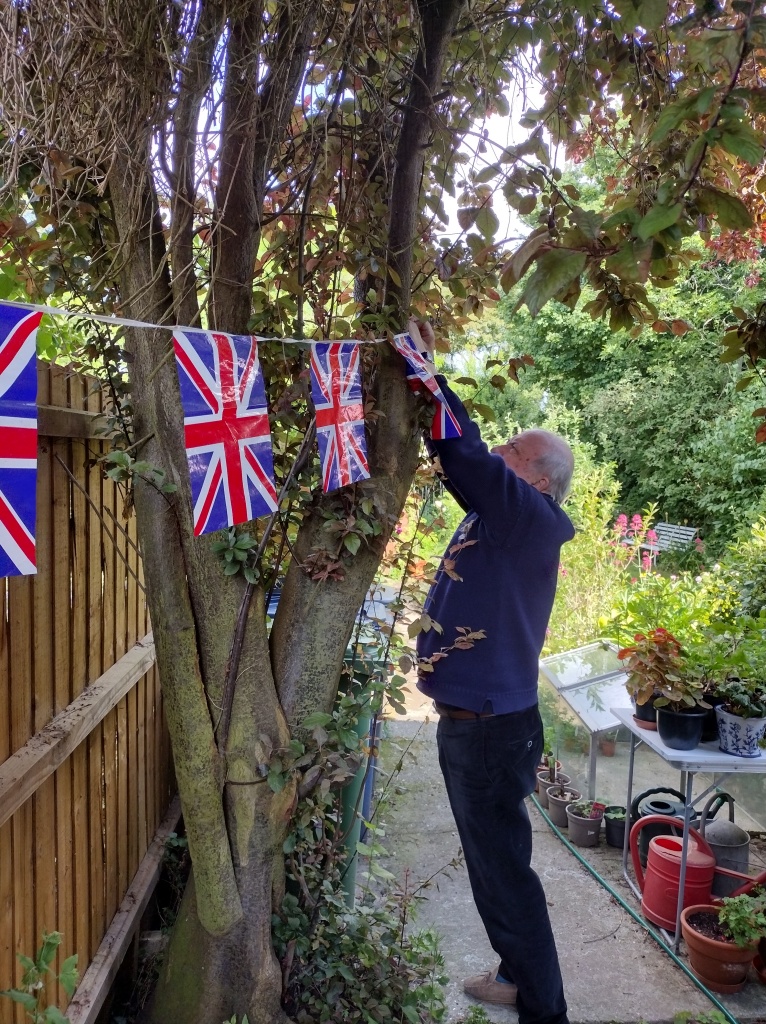
And here it is in the front.
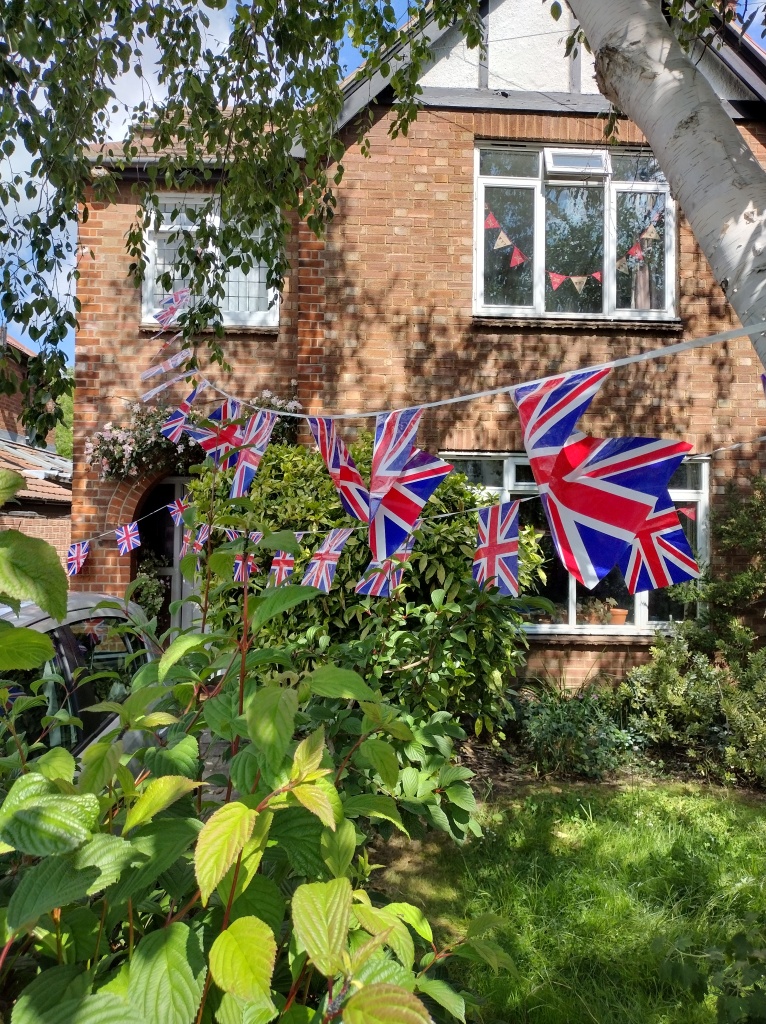
Although Trooping the Colour (the Queen’s Birthday Parade) is an annual event, this year was the first time we watched it on television. It was spectacular, with the Prince of Wales (Prince Charles, Duke of Cornwall) in the lead followed by the Duke of Cambridge (Prince William) and the Princess Royal (Princess Anne) riding behind all in full military dress, looking very splendid. The Queen was absent for the parade. There was a procession of carriages for other members of the Royal family, with the Duchesses of Cornwall and Cambridge together with Prince George, Princess Charlotte and Prince Louis. The children were facing backwards (good thing they didn’t suffer from motion sickness!) and were given a lot of press coverage as it was one of their first royal occasions.
At the end of the morning we saw the Queen on the balcony of Buckingham Palace first with her cousin, 86 year old Duke of Kent, and then with the ‘working members’ of the royal family. They watched a terrific fly past including not only the Red Arrows but also 15 Typhoons making a 70 formation. https://www.gbnews.uk/news/raf-typhoons-delight-queen-by-flying-in-70-formation-for-platinum-jubilee-which-they-kept-a-secret/308920
In the evening beacons were lit throughout the country at dusk, 9.45pm.
I cycled to Castle Hill to see the Cambridge beacon being lit. There was a piper playing before and while it was burning. Patrick watched the TV coverage which included beacon lighting on Unst (Shetland) with ‘Vikings’ who threw their burning brands into the fire.

On Friday June 3rd there was a service of thanksgiving at St Paul’s Cathedral attended by thousands of key workers as well as celebrities and a large number of royals. Again, the Prince of Wales stood in for the Queen who was reported as having experienced ‘some discomfort’ (tired maybe) after her busy ‘official birthday’ the day before. There were many superb aspects to the service from the building itself and the music to the religious ceremonial and the Archbishop of York’s sermon. He stood in for the Archbishop of Canterbury who had a combination of covid and pneumonia (not a good mix of illnesses). https://www.bbc.co.uk/news/uk-61681066
The media made a great drama of the attendance of the Duke and Duchess of Sussex, Prince Harry and his wife Megan. It was great to see them there – crossing the Atlantic with two very young children is no joke what with jet lag etc, for a short visit to London.
In the afternoon I decorated a jubilee cake. It was a Mary Berry recipe with a rich sponge (including less flour, more ground almonds and several eggs) topped by butter icing and fruit.

We started it for pudding when we had supper in the garden.
Jim came round and we kicked off with pink prosecco.

Saturday 4th was ‘normal’ if having the roof of the bike/’cow’ shed totally replaced can be counted as that. At the end of the day I took a load of rotten timbers to the tip – much improved by the help I was given by the people who work there.
In the evening we watched the concert that took place outside Buckingham Palace. It started with a brilliant film ‘when Paddington Bear came to tea with the Queen’ and they tapped the rhythm on their teacups of ‘We will rock you’ as the first song started. The music was not my style although it was chosen to appeal to a wide range of the population and included old pop songs as well as new. The best part of the evening show was the high tech ‘lumière’, projected onto and above Buckingham Palace and on several occasions accompanied by videos. Both Prince William and Prince Charles made speeches, focussing on the environment and a positive future, and thanks to the Queen, respectively.
On the afternoon of Sunday June 5th there was a Jubilee pageant following a 3km route starting at Whitehall and leading up the Mall and round the Queen Victoria monument in front of Buckingham Palace and on to St James’s Park. It was made up of four parts, military marching, horses and bands first, then a trip through the decades since 1952, followed by street theatre and dance and ending with a tribute to the monarch. There was a huge variety of acts with many celebrities involved (Dames in Jags was one – with Dame Pru Leith’s jag breaking down and needing a push!).
By the end of Saturday the jubilee cake had been eaten and I made a traditional Victoria sponge which we had on Sunday.

At the end of the pageant there was another balcony appearance when the ‘family succession’ joined the Queen. I took a photo from the television.

True to form the weekend was not completely dry, it rained on Sunday, and it was so cold that I lit the wood burner (in June!!).
On Monday morning the first thing to do was take down the bunting. It was very wet so I hung it up in the top bedroom to dry.

We’ve now put away the bunting, and are looking forward to our own street party for the local community at midsummer.


